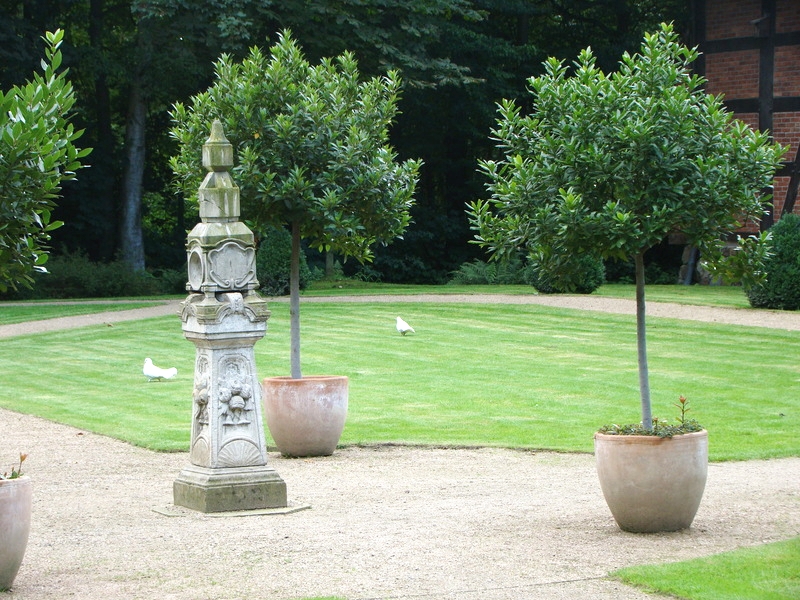
REPRESENTATIVE ARISTOCRATIC GARDEN
Baroque Grounds Facility
Order and Symmetry
In the Arkenstede manor, the Cloppenburg Open-air Museum in Lower Saxony has a residence of nobility from the end of the 17th century, which has been in the possession of aristocratic families from the Munster and Osnabrück area. Upon crossing the wooden bridge, visitors enter the world of the upper class. The symmetrically designed facility in front the manor is not a reconstruction of the garden formerly associated with Arkenstede manor. It is an exemplary representation of an aristocratic garden, which should agree with the zeitgeist and taste in gardens from the 17th and early 18th centuries.
The nobility of northwestern Germany presented themselves at the cultural height of the times in the 17th and 18th centuries and wanted to lead ideal lives in their manors and properties. The French style was the measure of garden landscaping for the strong European preconceptions and was en vogue. This representative baroque-style garden was developed to completion (Vaux-le-Vicomte in Versailles) under the direction of the French landscaper, André Le Nôtre (1613-1700). Even the nobility residing in the country wanted to move with the times, took on design elements from this style and thereby became cultural motivators for the region, in particular for the prosperous upper class of the farms.

The English Grounds
According to the preset ground rules for baroque gardens, a garden should always appear larger than it is and belong to the garden area in proximity to a building. The grounds: The distance of the view and the limitlessness of the sky should be enjoyable from the building. Four different types of grounds have been acknowledged, of which the garden presented here is the simplest form. The so-called “English Grounds”, or lawns, were only sub-divided into the lawn areas and separated by rock paths. Lawns become more popular during the first half of the 18th century. They were inexpensive and required the least maintenance, since the blooming plants did not need to be changed time and again. Ornamental plants like the ball-shaped, cut shrubs decorated the boundaries of the oblong grounds facility.
Moats and ponds, often found in northern Germany, were arranged according to the axial system, so that the compulsory structures appeared to be an intentional, aesthetic design. In special places across the lawn, terra cotta tubs with exotic plants provided additional decoration for the garden.
Many baroque gardens were re-designed towards the end of the 18th century into English-style landscapes. In this, the noble families followed the new fashion in gardens, moving away from the strict baroque symmetry towards the creation of “beautiful landscapes”.
